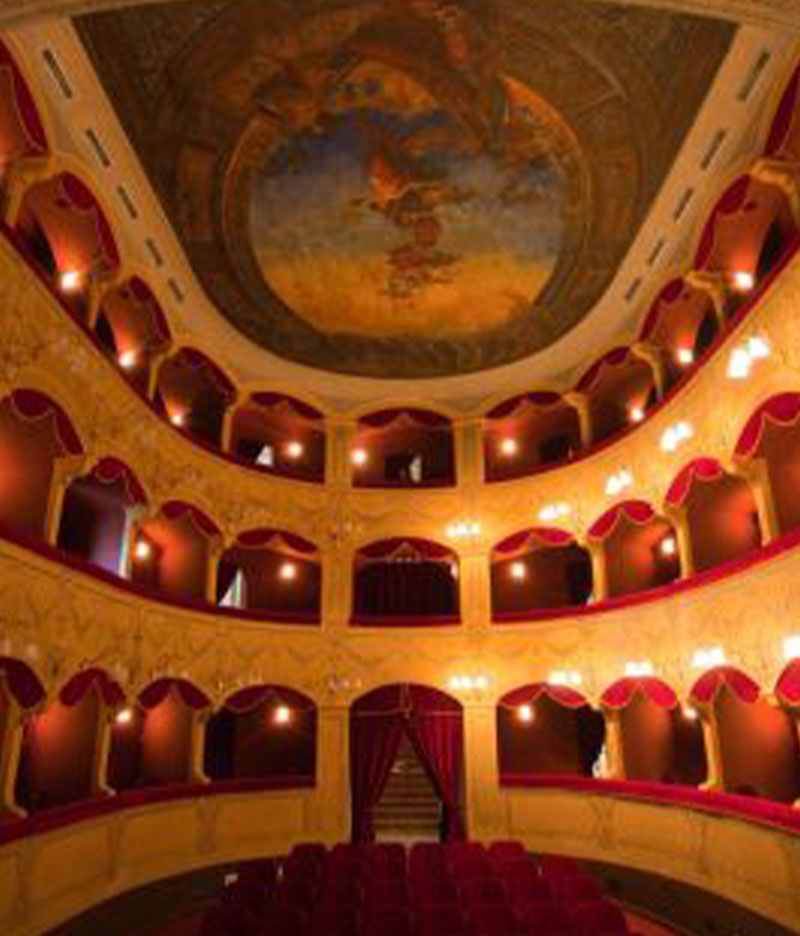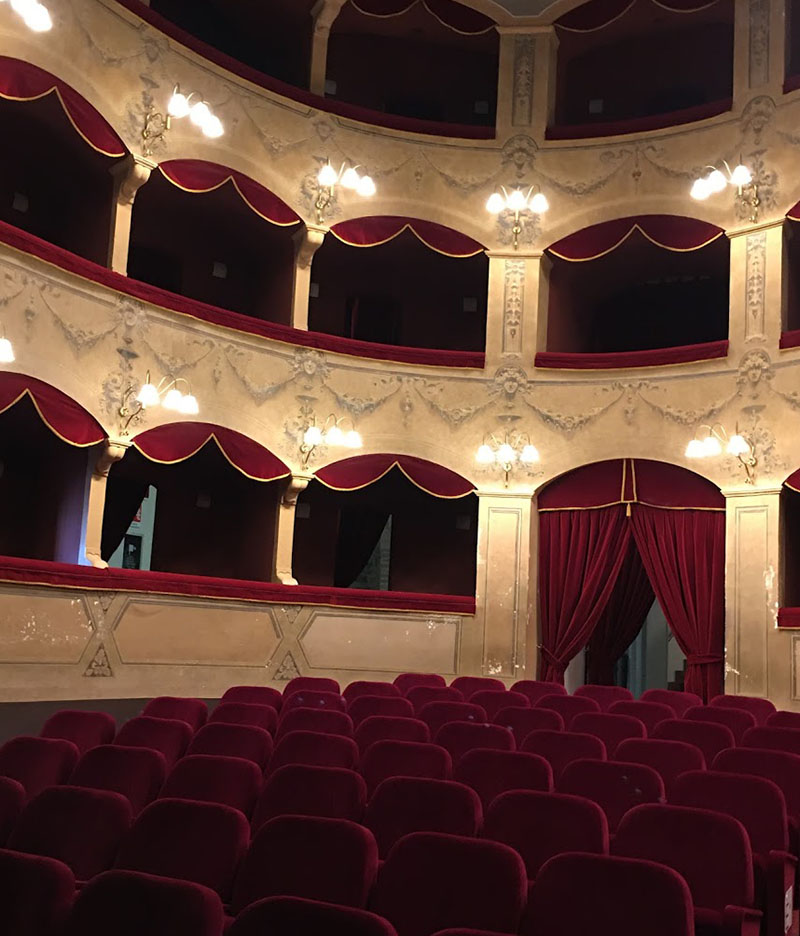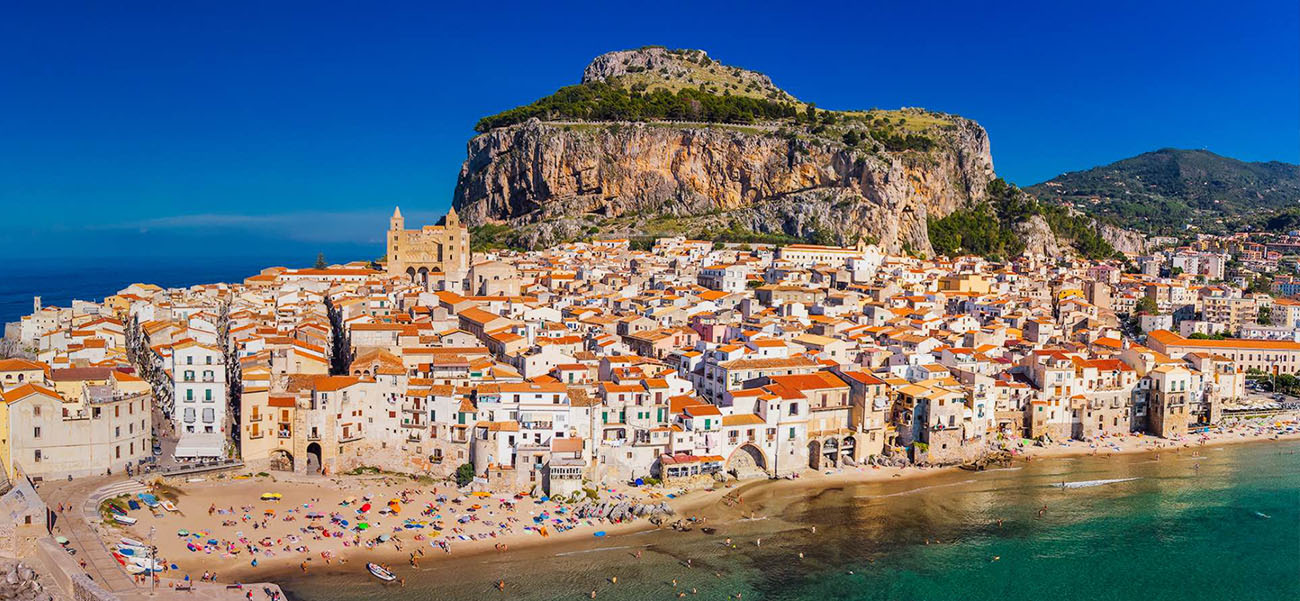Your basket is currently empty!
Cefalù
Cefalù is located in the northerther Sicilian coast, at the foot of a rocky promontory. The ancient Greeks created in the 4th century b.C. the polis Kephaloidion in the place where toady the old town stands. In 254 b.C. the city was conquered by the Romans, who called it Cephaloedium.
Under Byzantine domination, the settlement moved up from the valley to the ‘Rocca’ (the fortress). The old town was anyway not completely abandoned, as attested by the discovery of a building for the christian worship, with a polychrome mosaic floor which dates back to the 6th century. In .858 the town was conquered by the Arabs, and in 1063 by the Normans.
In 1131 Ruggero commanded the fortress-like construction of the cathedral. Soon after the Byzantine masters produced the apse’s mosaics. The dominant figure is the wonderful image of the Christ Pantocrator. Today Cefalù is a seaside resort, a tourist destination famous for both its beautiful coastline and iconic monuments.
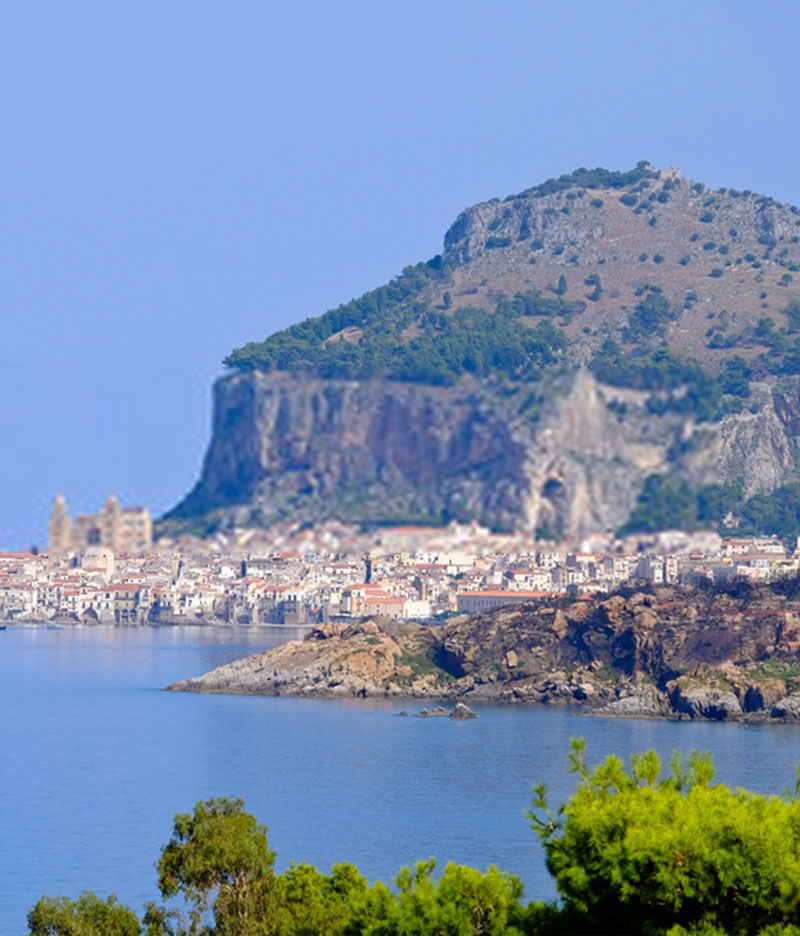
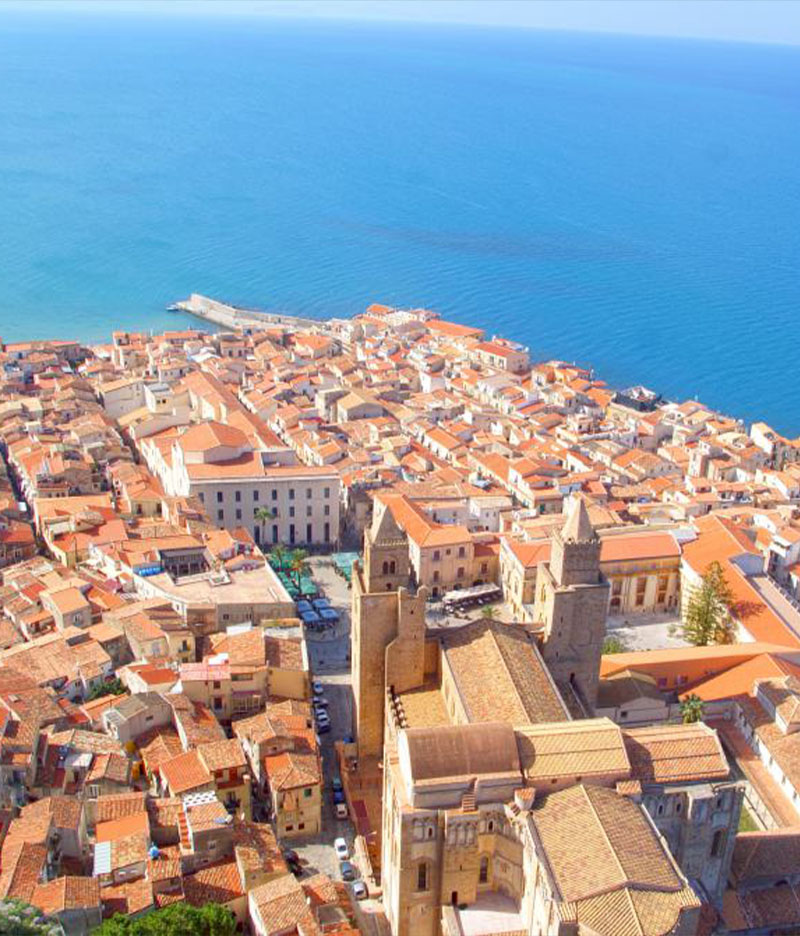
The Cathedral
It was built by order of Ruggero II, the first king of Sicily, in 1131. After his death (1154) the building process was interrupted and was picked up again with Federico II (1215). In the 17th-18th century the interiors of the cathedral were rebuilt in Baroque style, but the renovation of the 20th century led to their almost complete removal.
The building, in a raised position compared to the square, is preceded by a churchyard whose access is a stairway. The facade is accompanied by two massive towers (1240) and is decorated at the top by Arabic-style crossed ogives, an at the bottom by three arches (15th century). The interior presents a “Latin cross” plan, divided in three naves. The most important part of the cathedral consists of the mosaics, created by Byzantine masters (in 1148).
Among the mosaics, in the apse, the Christ Pantocrator stands out the most. Among the most prestigious works that can be found there, it is worth mentioning the baptismal font, made up of lumachella stone, together with a Madonna by Domenico Gagini (XVI century) and a wooden carved Crucifix (1468).
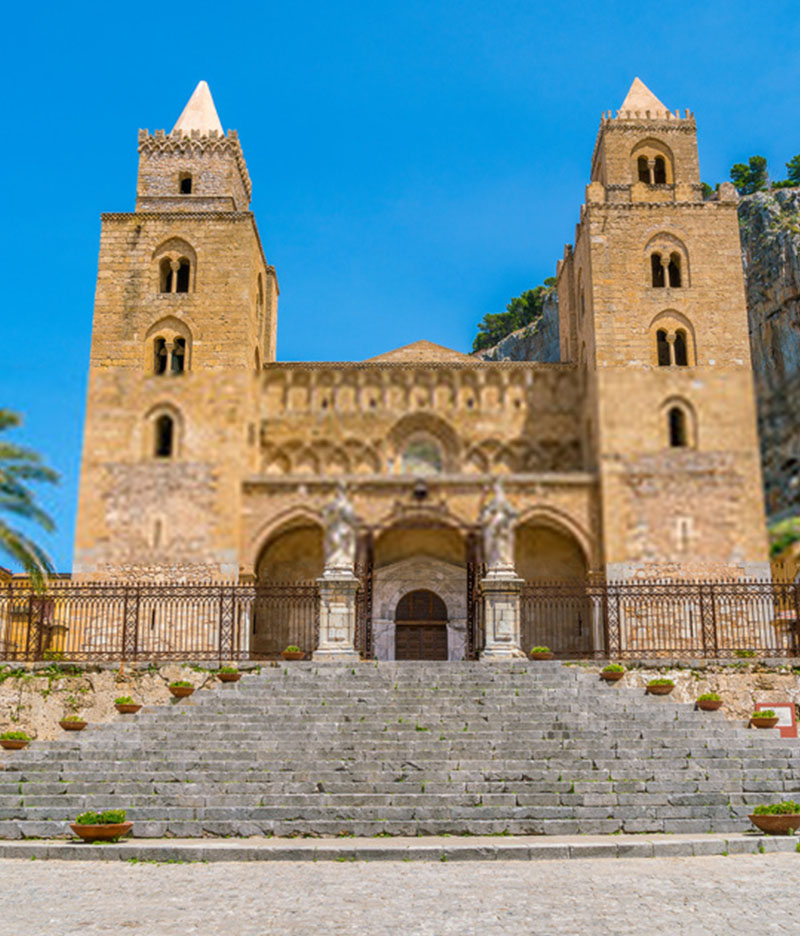
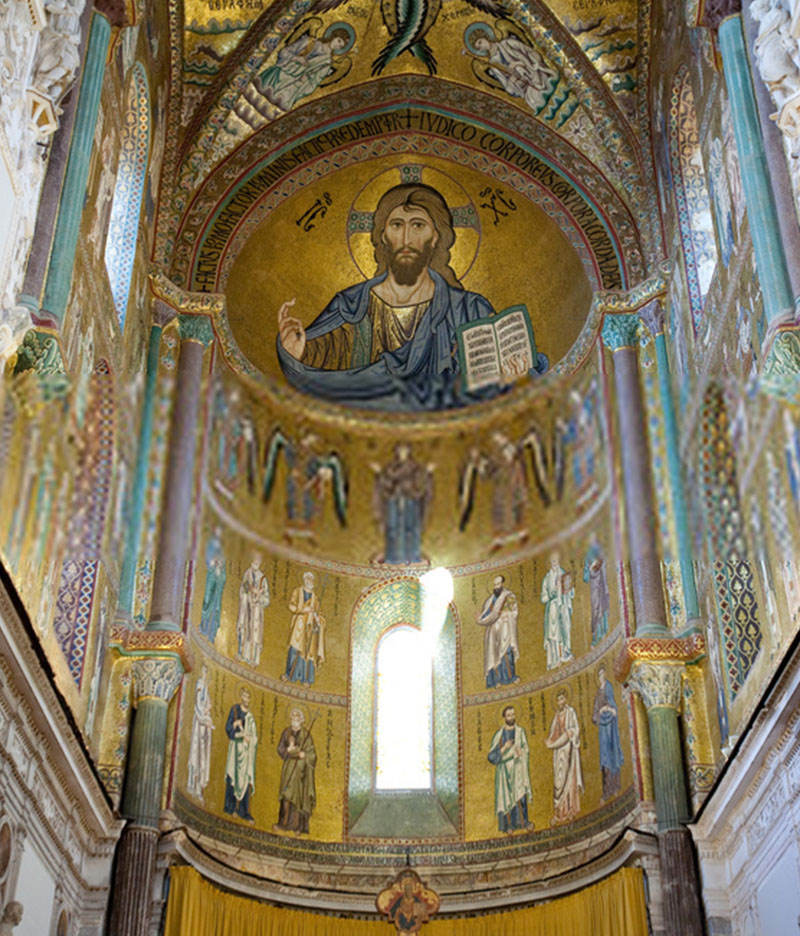
The Medieval Wash-house
In late Renaissance style, it is certainly one of the monuments in Cefalù that most arouse curiosity. Under the rocky promontory that frames Cefalù, the “Cefalino” river flows underground and then empties into the sea. Right There lies the ancient wash-house. In Arabic-Norman times people used to wash their clothes there.
In 1514 it was destroyed and rebuilt in rearmost position compared to the city’s walls, and the river that flowed on the open was covered with internal arches in 1655. At the end, in 1890, it acquired the actual position. The renovation works eventually ended in 1991.
The wash-house is composed by a stairway in lumachella stone that leads to a flooring smoothed by time and to a series of pools filled by the water that comes from twenty two cast-iron spouts (fifteen of which are lIon-heads), placed along the walls topped by low vaults. The water reaches sea through a small cave.
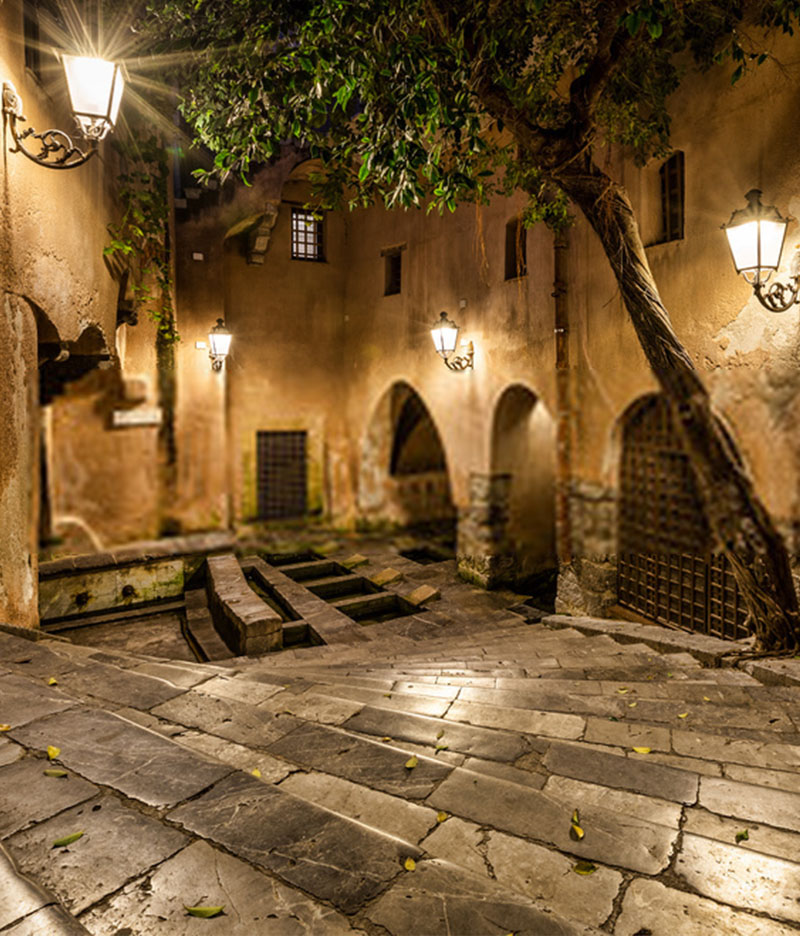
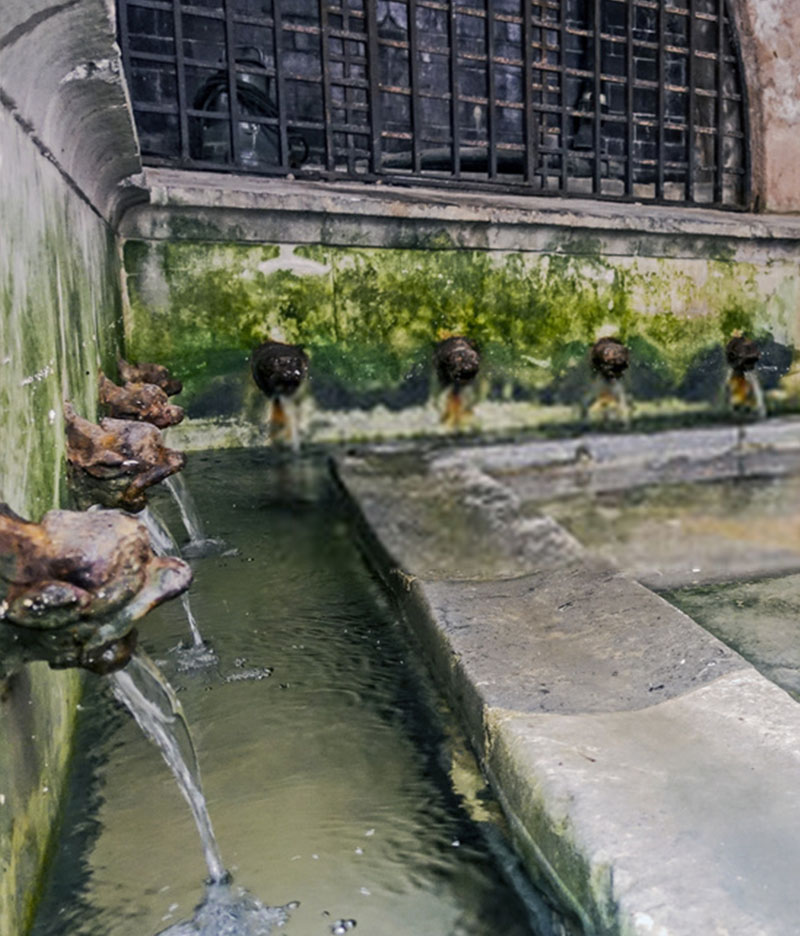
Osterio Magno Palace
According to tradition it was built by order of Ruggero II, to make it his new residence. In 14th century the palace was property of the Ventimiglia family, who rebuilt it according to the taste of the time. Afterwards it was offered to the Dominican friars, and then divided in apartments and shops.
The walls of the quadrangular tower, at least up to a certain height, were built during the Norman period. Both in the outside and in the inside there are mullioned and three-mullioned windows and other traces of a bi-chromatic stone decoration (in sandstone and basalt) that date back to the palace’s early stage.
After some digs carried out in the inside of the structure, some evidences of the Hellenistic period were found: remains of buildings, bronze coins that date back to 15th century b.C. and pottery.
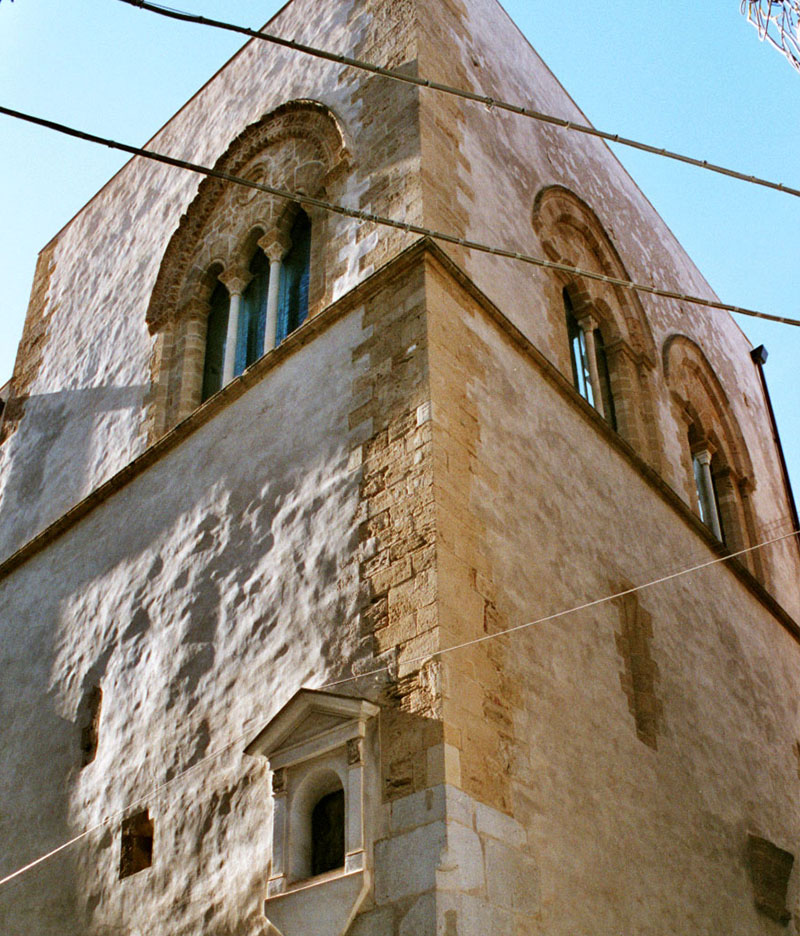
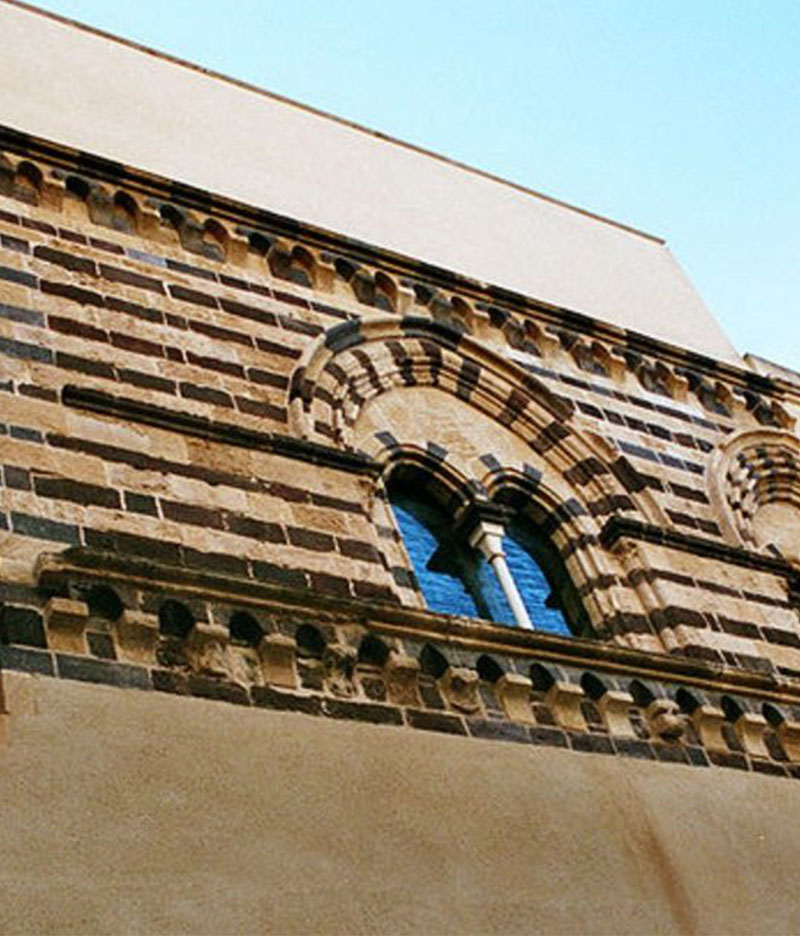
The Rocca di Cefalù
Known by the Phoenicians as Hercules’ promontory, the Rocca (cliff) of Cefalù is a spectacular limestone cliff with an altitude of 270 m. A Greek myth tells the sad love story of the beautiful shepherd boy Dafni, the Sicilian Orpheus.
After he was blinded by an enraged Juno because he had cheated on her daughter Echenaide, he was turned by a merciful Mercury into the imposing cliff that nowadays overlooks Cefalù, and the city took its name from its shape.
The old inhabitants saw in it the shape of an enormous head, and “head” is in fact the meaning of “kef”, which is the root of the city’s name.
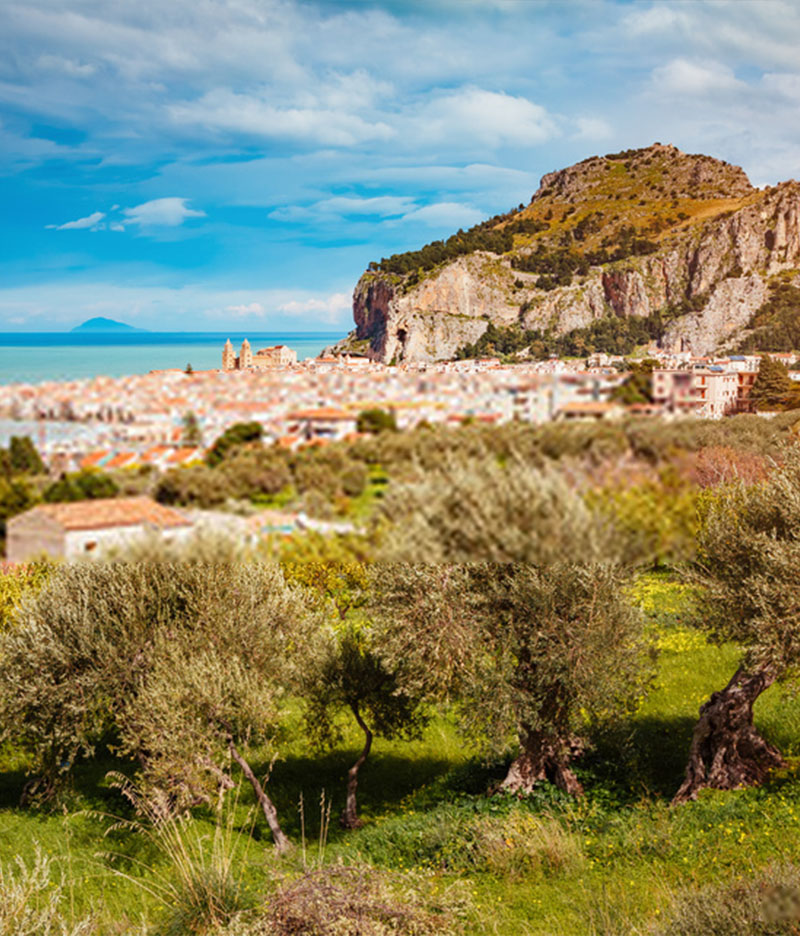
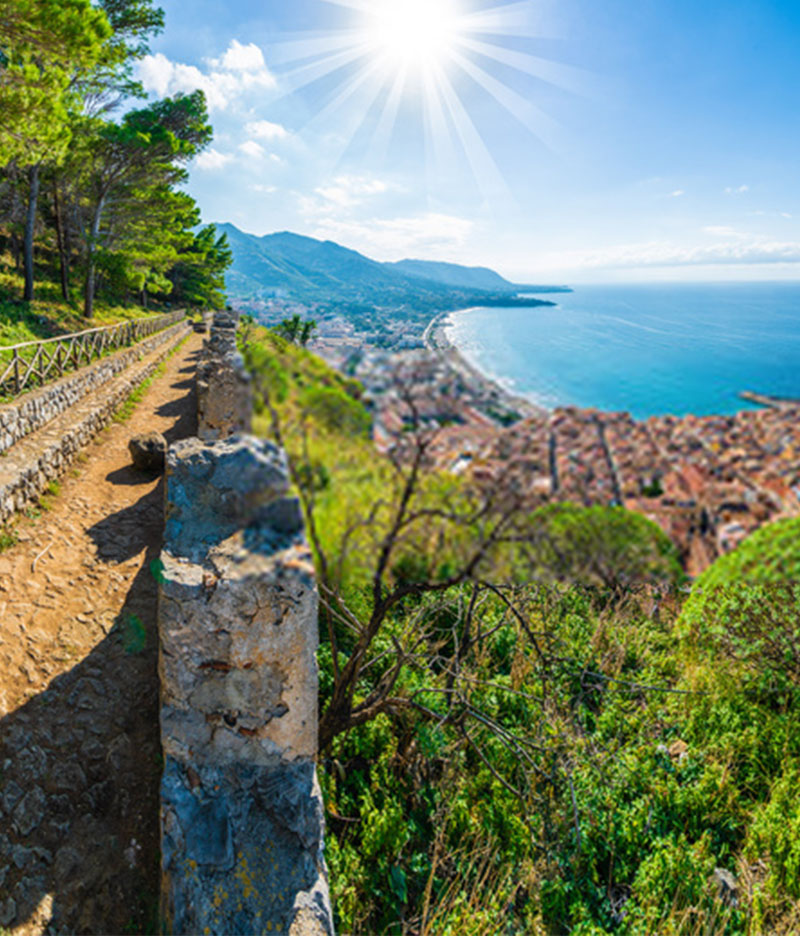
The Castle
On top of the Rocca lie the remains of the Cefalù’s Castle, which dates back to the 13th-14th century and has a rectangular plan of 35 m. x 20 m. Based on the remains, archaeologists assume that at the beginning it was composed by two towers and twelve rooms. The fact that the castle overlooks Cefalù’s surroundings, shows the great strategic importance that this place had in the past.
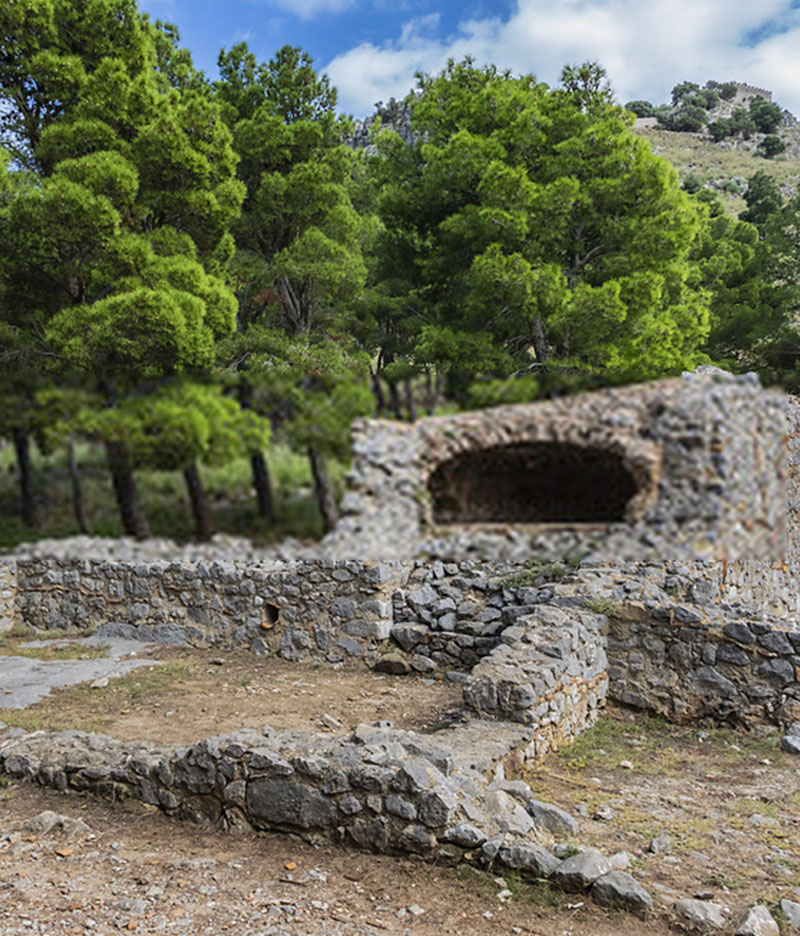
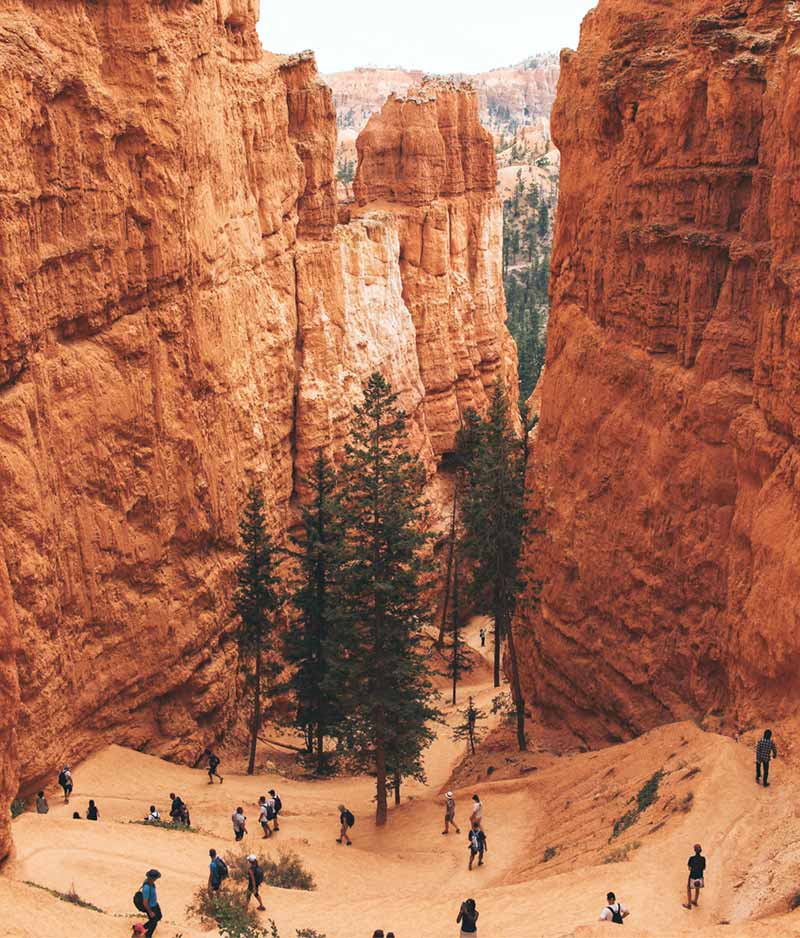
Diana’s temple
Near the ruins of the castle, on top of the Cefalù’s Rocca, the remains of the so called Diana’s Temple can be found, a megalithic building that dates back to 19th century b.C.
The building is believed to have had in the past a sacred function linked to the local cult of water: on the inside of the temple, in fact, there is a tank also dating back to 19th century b.C. Given the strategic position, the building probably had a defensive role.
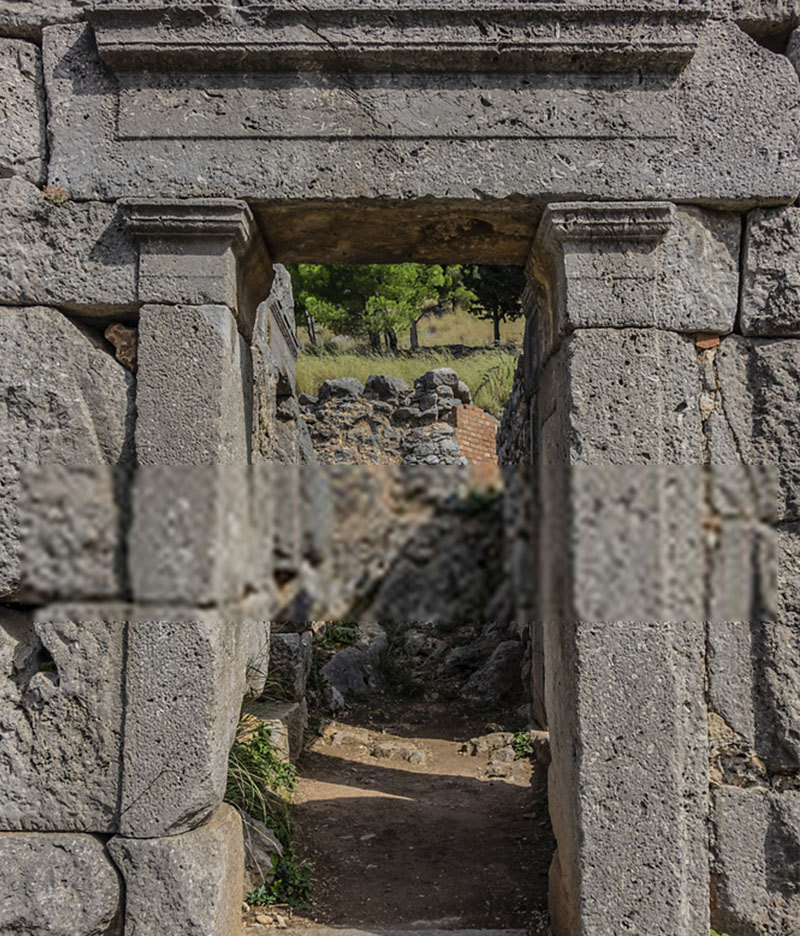
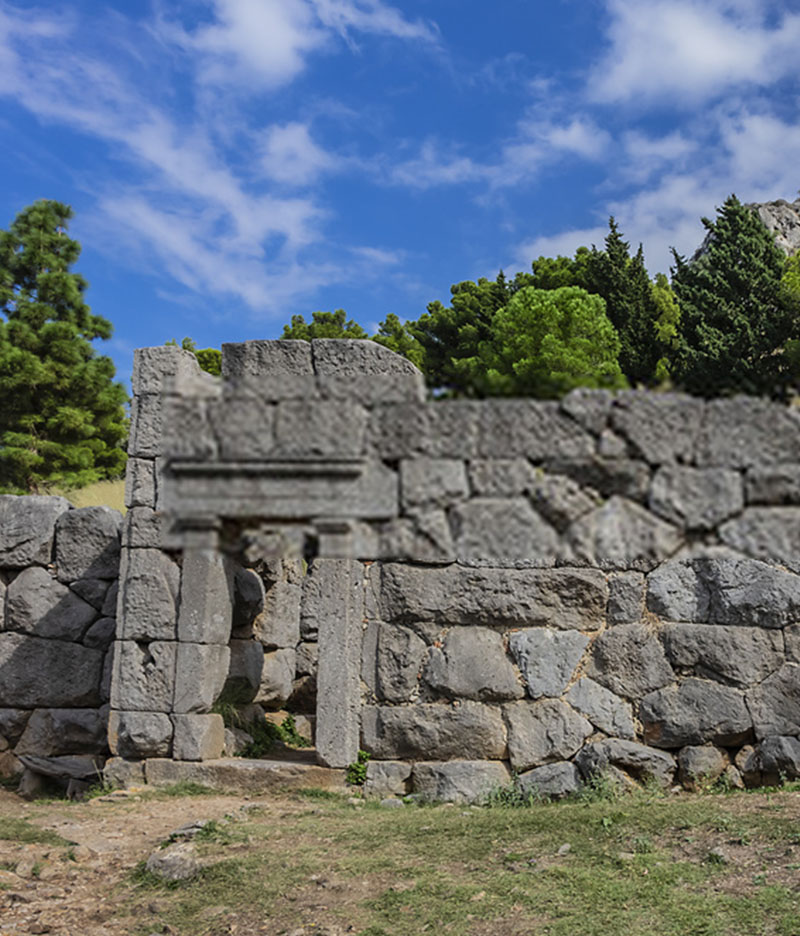
Megalithic Walls
The most remarkable evidence of the ancient Kephaloidon (Cefalù) is made up of the “megalithic” fortification walls, created with the dry stone technique, by using huge three meters thick blocks. The walls, that are still nowadays well kept, in particular on the north side, used to surround the whole city, making it look like an unconquerable fortress.
At least until ‘600, there were four openings along the walls: two on the south side, “Porta terra” in Garibaldi square, and “Porta Ossuna” in Cristoforo Colombo square, one on the sea to the west, “Porta marina or pescara”, the only one left untouched, and the otherr one to the east “Porta giudecca”, near S. Antonio’s church.

Porta Marina
The wonderful ‘Porta Marina‘ of Cefalù, with its Gothic arch, is the only remaining portal left among those that once permitted the access to the city. The portal faces the colorful quartiere dei pescatori (fishers’ district), where scenes of the famous film “Cinema Paradiso” were shooted.
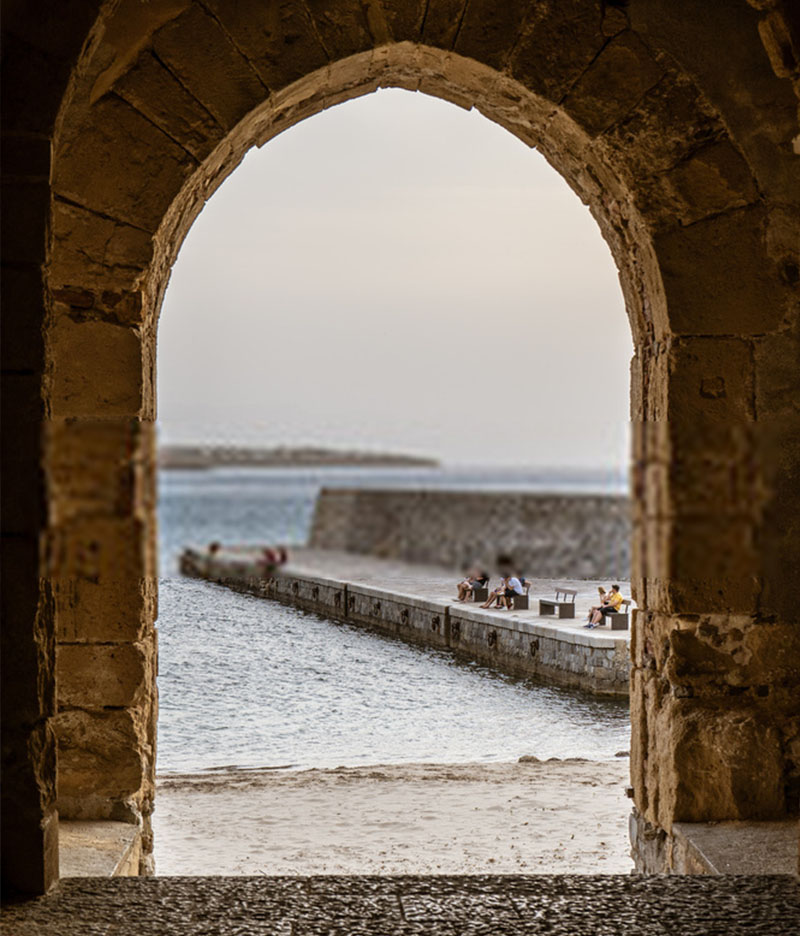
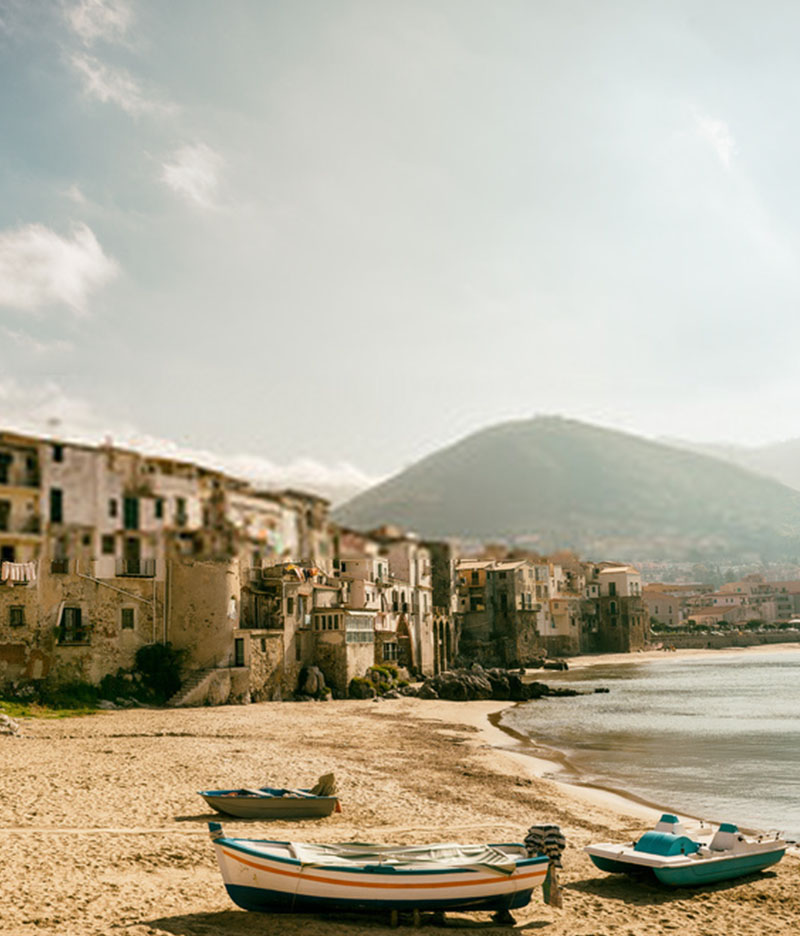
The Mandralisca Museum
It was founded in 1809 by the merchant and collector Enrico Piraino, the baron of Mandralisca. It is located in the same building where the Baron once lived. Enrico Piraino was an erudite and illuminated. He collected throughout his life paintings, coins, works of art, archaeological remains and documents.
The exposed pieces are various and comprehend an art gallery, a mollusks collection, a numismatic and an archaeological section. In the archaeological section of the museum ceramics, statues and mosaics are exposed, the majority of which are produced around Cefalù.
In the numismatic department the coins dated back up to 5th century b.C. are highly relevant. In the art gallery paintings of Sicilian artists of the 15th-18th century are exposed. The main piece of this collection is certainly the “Ritratto d’ignoto marinaio”, a work by the great Italian painter Antonello da Messina (1465-1472).
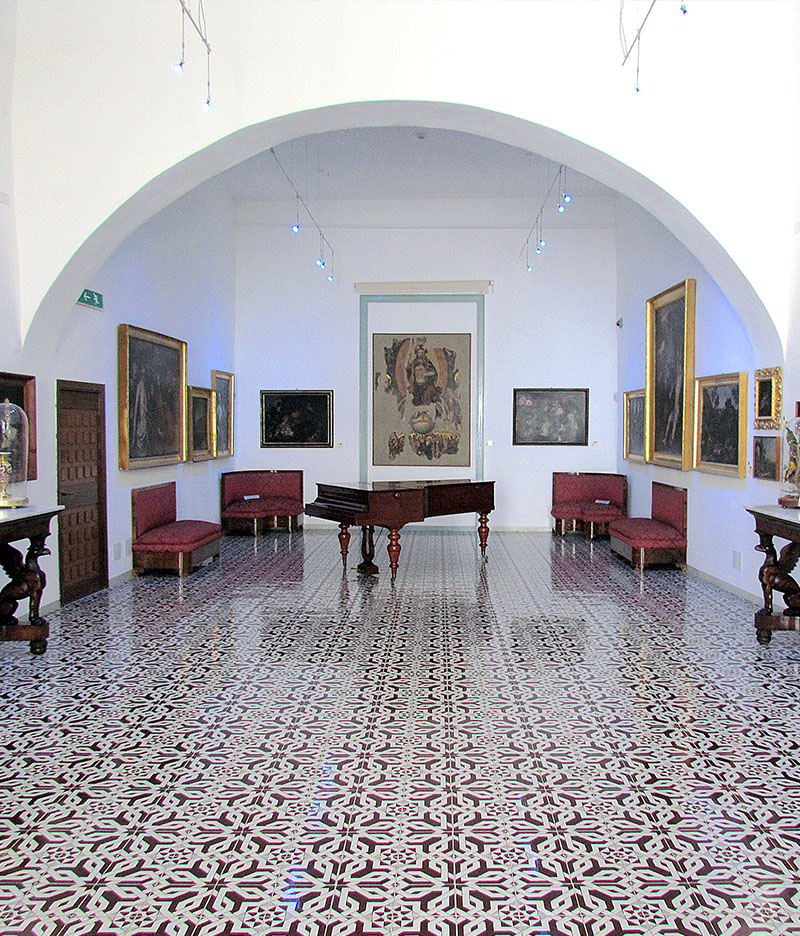
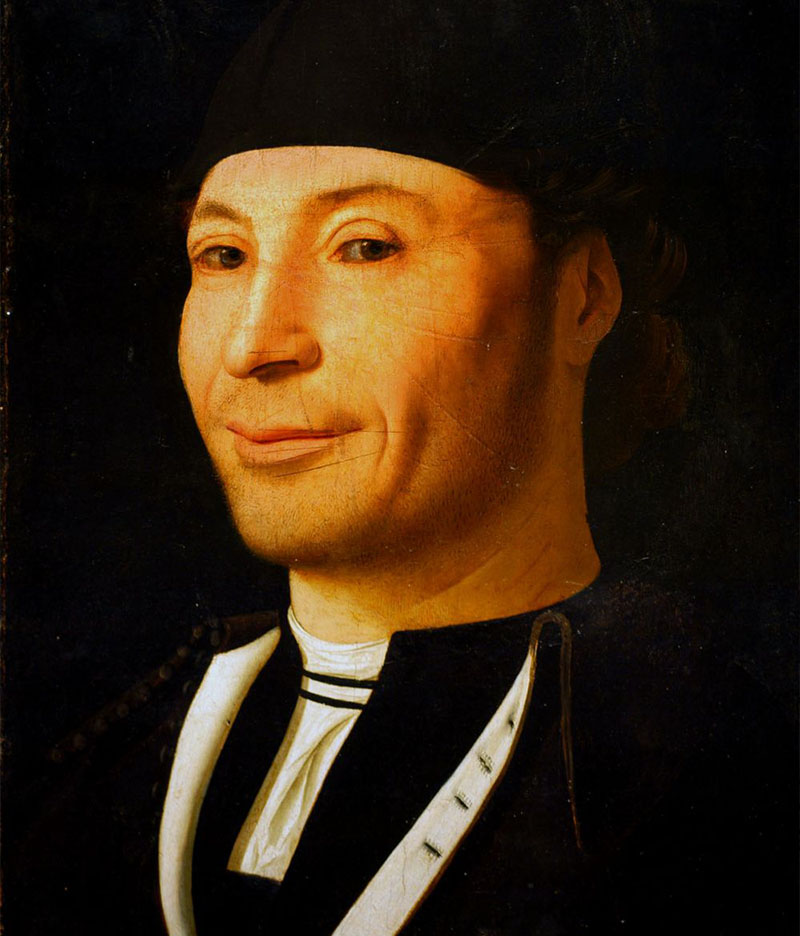
“Salvatore Cicero” Municipal Theatre
The long history of the theater begins in 1814, when a group of cefaludese notables decided to ask to the municipal authority for the concession of an area in order to create its first version, and obtained in 1816 a land right out the western walls of the City. After only two years the theater was completed with its horse-shoe shaped plan, typical of the traditional Italian theater, thanks to the architect Antonio Caruso.
During the World War two it became the head quarters of the German troops and the place that housed the majority of the command functions. Right after the war its renovation begun, because of the new needs of the modern cinematography.
In 1982 it was decided to give it the name of the cefaludese Master violinist Salvatore Cicero, who had died prematurely, as a tribute to his artistic value; he was first violin of some of the most important symphonic orchestras of the sixties, not to mention that he was an excellent compositor.
After six years, thanks to the film director Giuseppe Tornatore, the theater became a cinematographic set and traveled around the world with the film “Nuovo Cinema Paradiso”, which was awarded with an Oscar in 1989.
